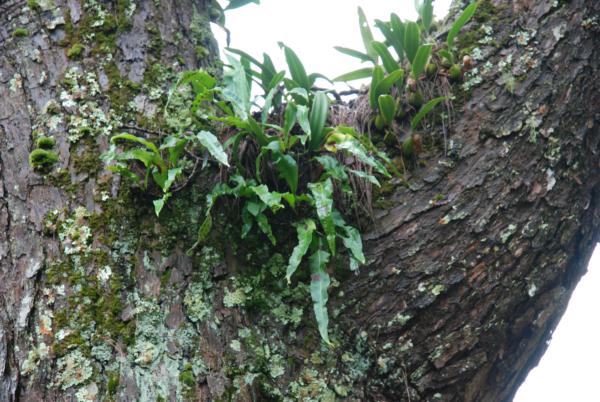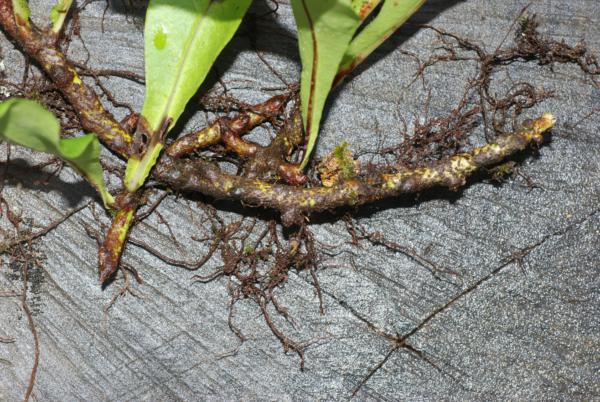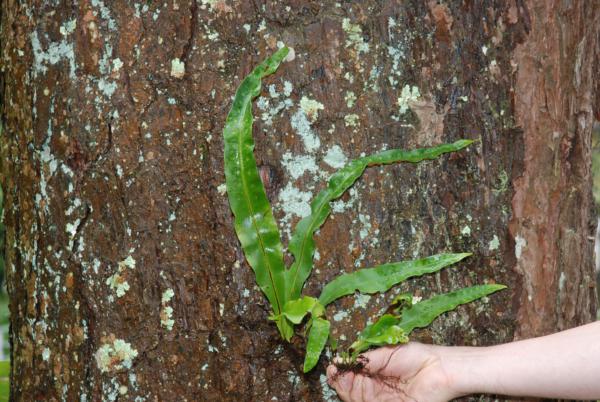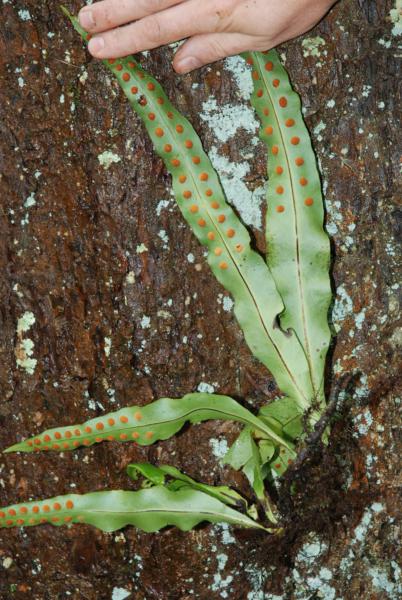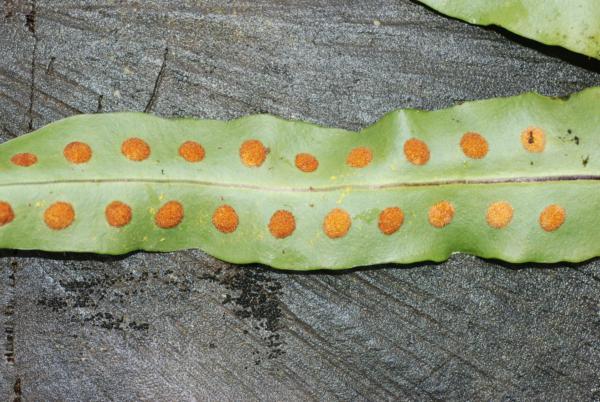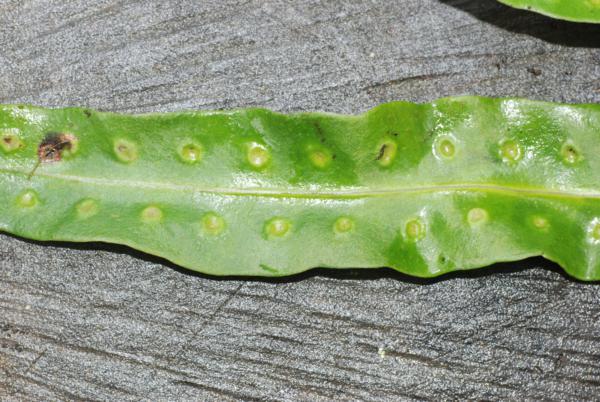
Lepisorus scolopendrium (Ching) Mehra & Bir
Family
Polypodiaceae
Nomenclature
Lepisorus scolopendrium (Ching) Mehra & Bir, Res. Bull. Panjab Univ. Sci. 15: 168. 1964; Tagawa in Hara, Fl. East. Himal. 494. 1966; Tagawa & K.Iwats., Fl. Thailand 3: 511, f. 51.6. 1989; Boonkerd & Pollawatn, Pterid. Thailand: 253, 274. 2000. – Polypodium scolopendrium Buch.-Ham. ex D.Don, Prodr. Fl. Nepal.: 1. 1825, non Burm.f. 1768. – Lepisorus excavatus var. scolopendrium Ching, Bull. Fan Mem. Inst. Biol. 4: 69. 1933; Tardieu & C.Chr., Fl. Indo-Chine 7(2): 456. 1941. – Pleopeltis scolopendrium (Ching) Alston & Bonner, Candollea 15: 207. 1956; Tagawa, J. Jap. Bot. 38: 326. 1963; Tagawa & K.Iwats., SouthE. Asian Stud. 5: 49. 1967. – Type: Buchanan-Hamilton, Nepal (holotype BM, right-hand plant only, mounted on same sheet as the holotype of Polypodium normale D.Don , from Nepal, Morton photograph 7612).
Polypodium excavatum Bory ex Willd., Sp. 5: 158. 1810; C.Chr., Contr. U.S. Natl. Herb. 26: 334. 1931, p.p.
Description
Rhizome creeping, bearing a few closely spaced fronds, dark brown on surface, scaly; scales dense, thin, gradually narrowing towards acuminate apex, up to 7 by 2 mm, concolorously light brown, clathrate, rather irregular at paler margin. Stipes short, indistinct, usually up to 2 cm long. Laminae variable in size and form, linear-lanceolate, often broadest at 1/3 way from base, up to 40 by 3.5 cm, gradually narrowing towards both ends, entire but variously waved at margin; midrib raised on both surfaces; papyraceous to herbaceous, light green; veins, copiously anastomosing with branched included veinlets. Sori round to oblong, large, one between adjacent main veins, medial, up to 4 mm broad, sometimes obliquely elongate up to 1 cm or more long, never fused to the next ones, the receptacles raised with hollows on upper surface. Spores monolete .
Distribution in Thailand
NORTHERN: Chiang Mai, Chiang Rai, Nan, Lamphun, Phitsanulok; NORTH-EASTERN: Loei; CENTRAL: Nakhon Nayok; SOUTH-EASTERN: Chanthaburi; PENINSULAR: Surat Thani.
Distribution in Laos
Champasak, Salavan.
Wider Distribution
Himalayas and Tibet, SW China, Upper Burma and Indochina.
Ecology
On branches of mossy trees, in dense forests at ridge in the North, or terrestrial on mossy mountain slope near ridge in open places or in light shade on Phu Luang, locally rather abundant.
Similar species
Lepisorus sublinearis (Baker ex Takeda) Ching
Proposed IUCN Conservation Assessment
Least Concern (LC). This species is widespread and not under any known threat.
Notes
The basionym of this species is often given as Polypodium scolopendrium Buch.-Ham. ex D.Don. However, this is a later homonym. The basionym is rather Lepisorus excavatus var. scolopendrium Ching.
Voucher specimens - Thailand
Middleton et al. 4870, Chiang Mai, Doi Suthep (E); Srisanga et al. 801, Nan, Doi Phu Kha (QBG); Middleton et al. 5643, Nakhon Nayok, Khao Yai National Park, summit of Khao Kieo (E).
Habit
Rhizome
Whole plant from above
Whole plant from below
Lower frond surface and sori
Upper frond surface
Site hosted by the Royal Botanic Garden Edinburgh. Content managed by Stuart Lindsay, Gardens by the Bay, Singapore and David Middleton, Singapore Botanic Gardens. Last updated 24 January 2012
